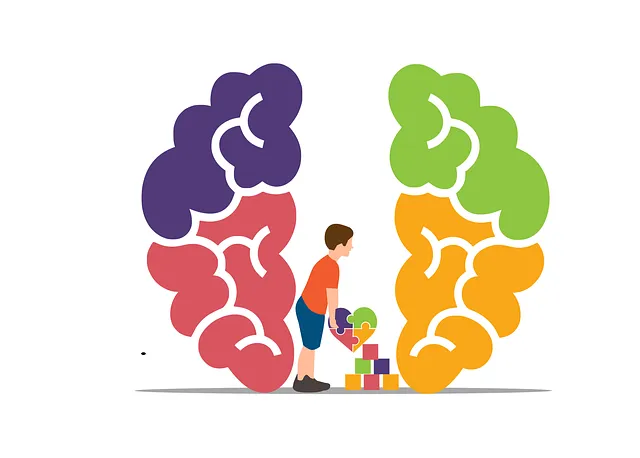Evaluating the impact of mental wellness programs at Centennial Kaiser Permanente (CKP) mental health locations involves a multi-faceted approach combining quantitative and qualitative methods. This includes surveys, standardized metrics, interviews, focus groups, and open-ended feedback to assess participant satisfaction, clinical outcomes, engagement rates, and knowledge/attitude changes. Key Performance Indicators (KPIs) tailored to specific initiatives like stress reduction, social skills training, and community outreach help measure success. These evaluations guide program development, optimize resource allocation, and ensure continuous improvement in mental health services at CKP locations.
Mental wellness programs at Centennial Kaiser Permanente locations have become integral in addressing growing mental health needs. Effective evaluation methods are crucial for understanding their impact, improving participant engagement, and ensuring community collaboration. This article explores key strategies, from defining Key Performance Indicators (KPIs) to implementing iterative evaluation processes, to assess and enhance these programs. By examining quantitative and qualitative metrics, case studies of successful engagement, and community feedback loops, we provide insights into optimizing mental wellness initiatives at Centennial Kaiser Permanente and similar locations.
- Assessing Program Impact: Metrics and Measurements
- – Defining key performance indicators (KPIs) for mental health programs
- – Quantitative vs qualitative assessment methods
- – Tools and surveys for patient satisfaction and outcome evaluation
Assessing Program Impact: Metrics and Measurements

Evaluating the impact of a mental wellness program is crucial to understanding its effectiveness and making informed improvements. At Centennial Kaiser Permanente mental health locations, a comprehensive assessment strategy is employed to gauge the success of various initiatives. Metrics such as participant satisfaction scores, clinical outcomes, and engagement rates provide insights into the overall reach and quality of care.
The Mental Health Education Programs Design often includes pre-post surveys to measure changes in knowledge and attitudes. Community outreach programs, through Community Outreach Program Implementation, are evaluated based on their ability to increase access to mental health resources within diverse communities. Additionally, risk assessment tools for mental health professionals, a critical component of any program, help identify potential hazards and ensure the well-being of practitioners while fostering a safe environment for clients.
– Defining key performance indicators (KPIs) for mental health programs

Evaluating mental wellness programs requires a strategic approach, and one of the critical components is establishing Key Performance Indicators (KPIs). These KPIs serve as measurable benchmarks to assess the effectiveness and success of mental health initiatives, particularly at locations like Centennial Kaiser Permanente. When designing KPIs, organizations should consider both qualitative and quantitative aspects. For instance, reducing wait times for therapy appointments, increasing client satisfaction scores, and raising awareness about available resources are quantifiable metrics. On the other hand, qualitative indicators might include improvements in clients’ social skills, enhanced ability to manage stress, and better overall mental well-being, which can be measured through surveys or interviews.
For Centennial Kaiser Permanente’s mental health locations, tailored KPIs could focus on the impact of specific programs. For example, a Community Outreach Program Implementation may aim to increase community engagement by 20% within a year, reflecting its success in raising mental health literacy. Similarly, Social Skills Training can be evaluated by measuring improvements in clients’ interpersonal interactions and support networks. Additionally, Stress Reduction Methods can be assessed through pre-and post-program surveys gauging participants’ perceived stress levels and the adoption of healthy coping strategies. These KPIs provide a comprehensive framework to guide program development, resource allocation, and continuous improvement at mental health locations like Centennial Kaiser Permanente.
– Quantitative vs qualitative assessment methods

Evaluating mental wellness programs at Centennial Kaiser Permanente mental health locations requires a balanced approach that combines both quantitative and qualitative assessment methods. Quantitative methods, such as surveys and standardized metrics, offer measurable data that can demonstrate program effectiveness on a large scale. This includes tracking participant demographics, treatment adherence rates, and symptom reductions over time. For example, measuring improvements in anxiety or depression levels through validated scales provides tangible evidence of the program’s impact.
Qualitative methods, in contrast, delve deeper into individual experiences, insights, and feedback. Interviews, focus groups, and open-ended surveys capture participants’ subjective perceptions of the program, including their personal growth, coping strategies, and relationships with peers and therapists. Integrating these qualitative perspectives complements quantitative findings, providing a more holistic view of program success. This dual approach ensures that both objective data and rich narratives contribute to evaluating programs like those offered at Centennial Kaiser Permanente mental health locations, fostering continuous improvement in delivering effective mental wellness support.
– Tools and surveys for patient satisfaction and outcome evaluation

At Centennial Kaiser Permanente mental health locations, patient satisfaction and outcome evaluation are key components of their comprehensive approach to care. To gauge patient experience and well-being, various tools and surveys are employed. These include structured questionnaires designed to assess the effectiveness of therapies, services, and overall treatment satisfaction.
One notable initiative is the inclusion of programs focused on stress management workshops organization, confidence boosting, and inner strength development. Patient feedback from these programs has been positive, indicating improved coping mechanisms and enhanced mental resilience. Such evaluations not only help in refining existing programs but also guide future initiatives, ensuring that services remain aligned with the evolving needs of the community.
Evaluating the effectiveness of mental wellness programs is paramount, especially at organizations like Centennial Kaiser Permanente, with its extensive network of mental health locations. By utilizing a combination of quantitative and qualitative assessment methods, such as defining key performance indicators (KPIs), administering patient satisfaction surveys, and collecting outcome data, we can gain valuable insights into program impact. These evaluation techniques empower healthcare providers to refine their services, ensuring they meet the unique needs of individuals seeking mental health support at Kaiser Permanente’s diverse locations across the country.






